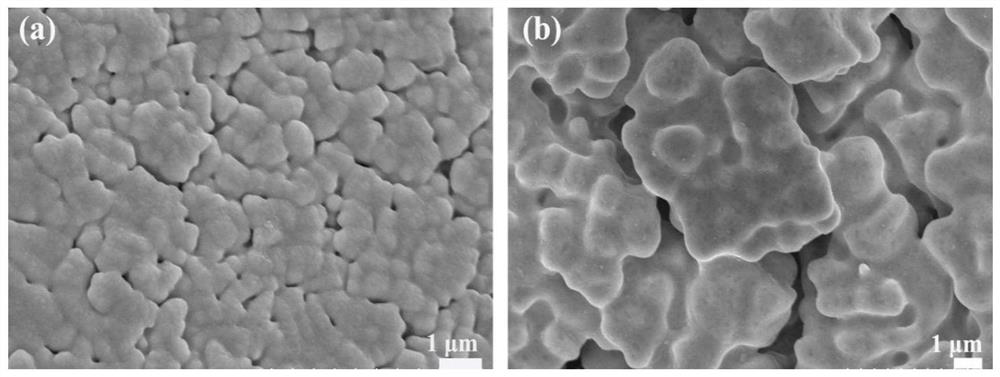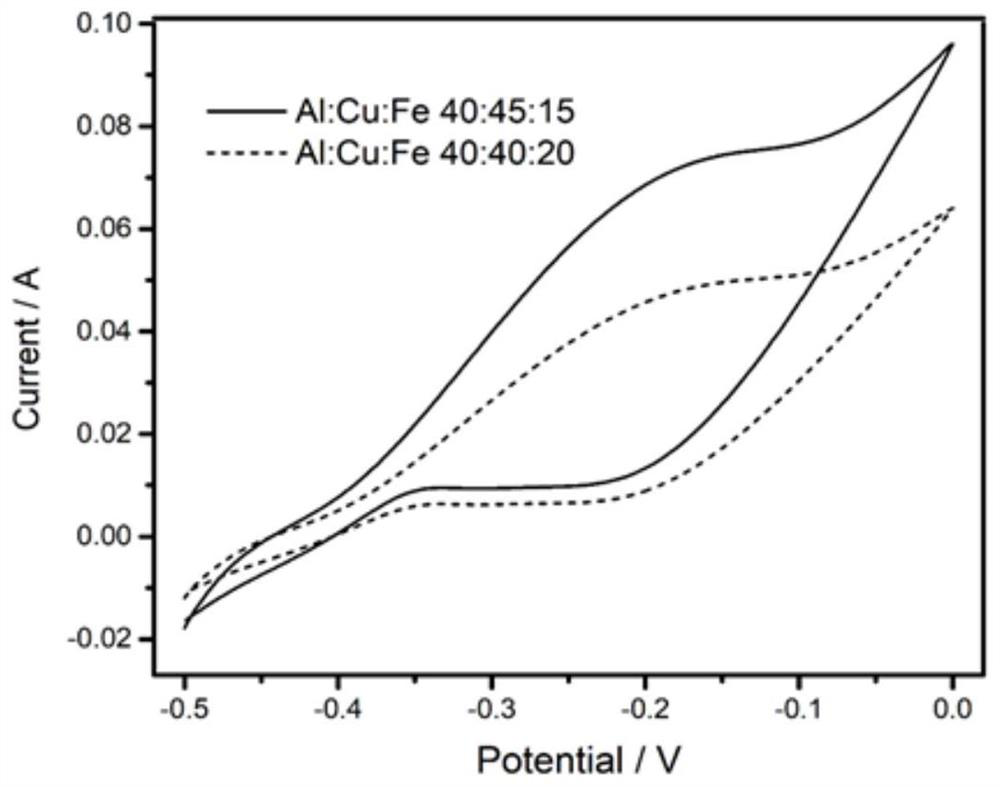Preparation method based on nano-porous independent electrode
An independent electrode and nanoporous technology, which is applied in hybrid capacitor electrodes, hybrid/electric double layer capacitor manufacturing, hybrid capacitor collectors, etc., can solve the problem of large volume changes of transition metal oxides, harsh operating conditions of fine control, and capacity decay speed Faster and other problems, to achieve the effect of increasing the rapid mass transfer process, enriching the effective redox reaction active sites, and accelerating the response kinetics
- Summary
- Abstract
- Description
- Claims
- Application Information
AI Technical Summary
Problems solved by technology
Method used
Image
Examples
Embodiment 1
[0020] A method for preparing a nanoporous independent electrode, comprising the following steps:
[0021] (1) The metal particles of Al, Cu and Fe with a molar ratio of 8:9:3 and a purity of more than 99.99% are respectively placed in dilute Hcl solution for ultrasonic pickling to remove the oxide layer on the surface of the metal particles, and then put Dry in a vacuum drying oven to remove the oxide layer on the surface of the metal particles. In order not to corrode the metal particles during the pickling process and to effectively remove the oxide layer on the surface, as a preferred solution, dilute Hcl solution is selected for the pickling process. concentration of 0.001 M L-1, ultrasonic time of 30 min, and then vacuum drying, the conditions in the vacuum drying step are: vacuum degree of -10 Mpa, temperature of 70 ° C, drying time of 12 h, this condition does not affect the metal Oxidation occurs on the particle surface.
[0022] (2) Before smelting, put the metal Ti...
Embodiment 2
[0030] A method for preparing a nanoporous independent electrode, comprising the following steps:
[0031] (1) The metal particles of Al, Cu and Fe with a molar ratio of 8:9:3 and a purity of more than 99.99% are respectively placed in dilute Hcl solution for ultrasonic pickling to remove the oxide layer on the surface of the metal particles, and then put Dry in a vacuum drying oven to remove the oxide layer on the surface of the metal particles. In order not to corrode the metal particles during the pickling process and to effectively remove the oxide layer on the surface, as a preferred solution, dilute Hcl solution is selected for the pickling process. concentration of 0.001 M L-1, ultrasonic time of 30 min, and then vacuum drying, the conditions in the vacuum drying step are: vacuum degree of -10 Mpa, temperature of 70 ° C, drying time of 12 h, this condition does not affect the metal Oxidation occurs on the particle surface.
[0032] (2) Before smelting, put the metal Ti...
PUM
 Login to View More
Login to View More Abstract
Description
Claims
Application Information
 Login to View More
Login to View More - R&D
- Intellectual Property
- Life Sciences
- Materials
- Tech Scout
- Unparalleled Data Quality
- Higher Quality Content
- 60% Fewer Hallucinations
Browse by: Latest US Patents, China's latest patents, Technical Efficacy Thesaurus, Application Domain, Technology Topic, Popular Technical Reports.
© 2025 PatSnap. All rights reserved.Legal|Privacy policy|Modern Slavery Act Transparency Statement|Sitemap|About US| Contact US: help@patsnap.com


